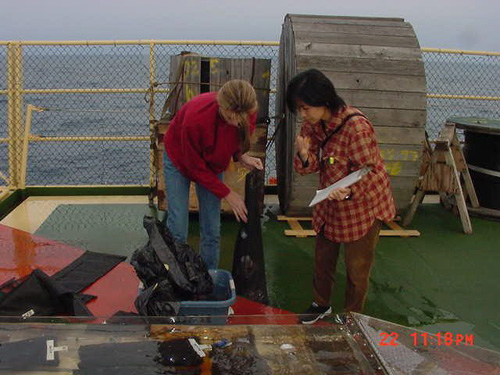
The results of biological sampling in the George V coastal region are presented. The Southern ocean is one of the nutrient rich oceans but is also known for low phytoplankton distribution relative to nutrient levels. This study investigated what controls phytoplankton growth in the George V coastal region. Phytoplankton can be described in different time scales using different methods: seasonal nutrient consumption describes the seasonal plankton growth; chlorophyll concentrations show the weekly-monthly phytoplankton growth. On comparing light availability, this study showed phytoplankton growth was not driven by light in most of the study region. Nutrients could not be limiting factors of phytoplankton growth because high nutrient availability was confirmed in the study region. The relationship between Fe concentrations and integrated Si/NO3 deficit ratios suggests that iron might have enhanced the usage of NO3, in other words, iron enhanced phytoplankton growth. The shortage of iron occurred as a result of phytoplankton bloom and might have influenced growth rates of phytoplankton.

E&ESJ student Akiko Matsuda (right) and
PhD student Sara Green, preparing for an
incubation experiment aboard the research icebreaker Nathaniel B. Palmer, offshore
Antarctica.
Go to Science Research Projects.
Go to Learning Objectives of Research Project.
Return to E&ESJ home page.
Last updated: 18 June 2002, KAK.